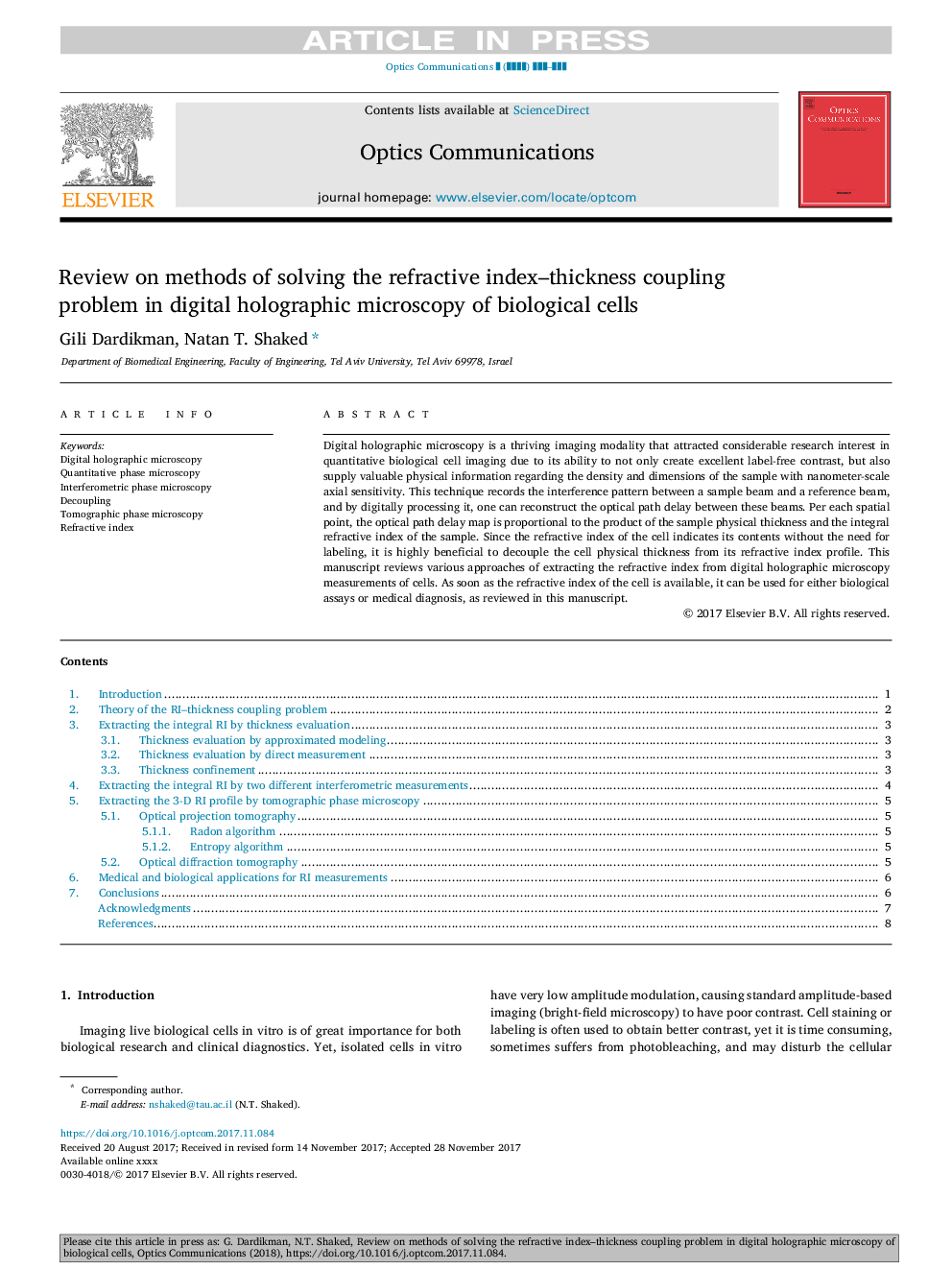| Article ID | Journal | Published Year | Pages | File Type |
|---|---|---|---|---|
| 7925075 | Optics Communications | 2018 | 9 Pages |
Abstract
Digital holographic microscopy is a thriving imaging modality that attracted considerable research interest in quantitative biological cell imaging due to its ability to not only create excellent label-free contrast, but also supply valuable physical information regarding the density and dimensions of the sample with nanometer-scale axial sensitivity. This technique records the interference pattern between a sample beam and a reference beam, and by digitally processing it, one can reconstruct the optical path delay between these beams. Per each spatial point, the optical path delay map is proportional to the product of the sample physical thickness and the integral refractive index of the sample. Since the refractive index of the cell indicates its contents without the need for labeling, it is highly beneficial to decouple the cell physical thickness from its refractive index profile. This manuscript reviews various approaches of extracting the refractive index from digital holographic microscopy measurements of cells. As soon as the refractive index of the cell is available, it can be used for either biological assays or medical diagnosis, as reviewed in this manuscript.
Related Topics
Physical Sciences and Engineering
Materials Science
Electronic, Optical and Magnetic Materials
Authors
Gili Dardikman, Natan T. Shaked,
